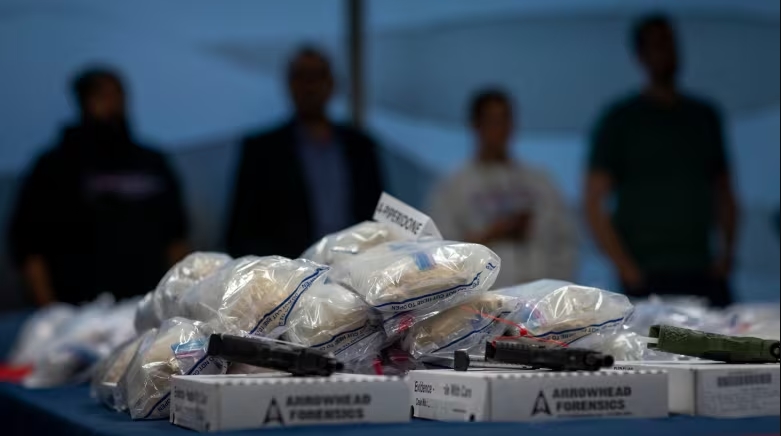Large Drug Seizures in B.C. May Fuel Overdoses and Violence, Experts Warn
Shraddha Tripathy
11/22/20242 min read


A significant drug bust in Surrey, B.C., announced Wednesday has sparked debate about the broader implications of large-scale drug seizures. While police tout such operations as critical disruptions to the drug trade, researchers and advocates argue that these actions often lead to unintended consequences, including an increase in overdoses, violence, and instability in drug markets.
Surrey RCMP Assistant Commissioner Brian Edwards described the seizure, which included 36 kilograms of fentanyl, methamphetamine, cocaine, MDMA, counterfeit pills, firearms, and cash, as one of the largest in the detachment’s history. Edwards emphasized that removing such a large quantity of fentanyl from the streets would disrupt organized crime operations and potentially save lives.
However, criminologist Neil Boyd and drug policy researcher Thomas Kerr caution that the disruption caused by these busts often has a darker side.
Unintended Consequences
“From the consumer’s perspective, large busts create uncertainty in drug supply and potency,” said Boyd, professor emeritus at Simon Fraser University. “This can lead to overdoses as users adjust to new or more toxic supplies.”
Kerr, director of research at the B.C. Centre on Substance Use, pointed to studies linking drug seizures to spikes in overdoses. A 2023 study in the American Journal of Public Health showed overdoses doubled near opioid seizures in Indianapolis, with effects lasting up to three weeks.
“When you disrupt the supply chain, you don’t stop the demand,” said Kerr. “Instead, the market becomes more dangerous and volatile as new suppliers rush to fill the void.”
Impact on Public Health
The context in B.C. is especially dire. The province has recorded 1,749 toxic drug deaths in the first nine months of 2024, driven by an increasingly dangerous illicit drug supply.
Advocates like DJ Larkin of the Canadian Drug Policy Coalition argue that law enforcement’s focus on seizures and arrests fails to address the underlying issue of demand. “What replaces the seized drugs could be more potent, unpredictable, and harmful,” said Larkin.
Calls for Policy Reform
Both Larkin and Kerr advocate for alternatives to the traditional enforcement approach, such as supporting regulated drug supply models like compassion clubs, where users can access safer substances.
Kerr also noted that preventing overdoses requires bolstered harm-reduction measures, such as overdose prevention sites and widespread drug testing, especially in the weeks following large seizures.
“These busts are often celebrated, but the reality is grim,” said Kerr. “We see an increase in overdoses and no clear evidence of a public health benefit.”
For Boyd, a balanced strategy incorporating harm reduction, prevention, treatment, and enforcement—known as the four-pillars approach—is critical. However, he acknowledged the mounting evidence of harm caused by drug seizures and their limited long-term impact.
Advice for Drug Users
In light of the recent Surrey bust, Larkin urged drug users in Metro Vancouver to exercise caution.
“Stick to overdose prevention sites, test your drugs where possible, and avoid using alone,” she said. “The supply may shift unpredictably in the coming weeks.”
As the debate over drug policy continues, experts agree that addressing B.C.’s toxic drug crisis requires innovative solutions that go beyond traditional enforcement tactics.
News
Stay updated with the latest BC news stories, subscribe to our newsletter today.
SUBSCRIBE
© 2024. All rights reserved.
LINKS
